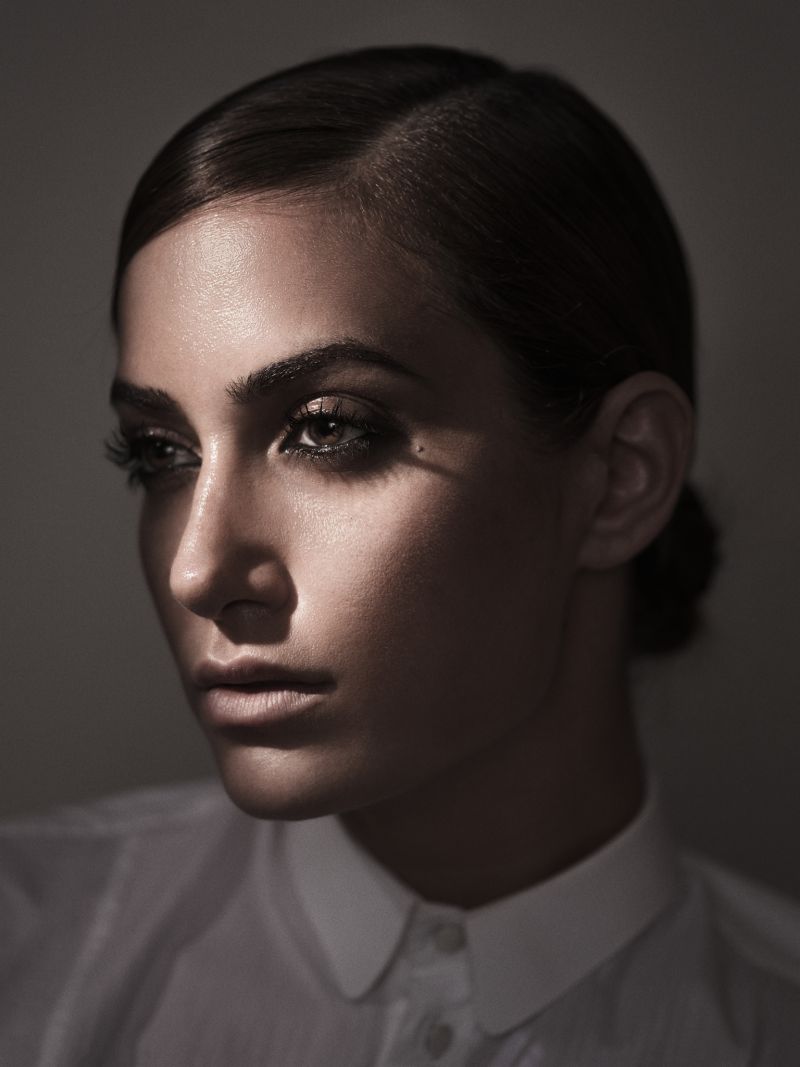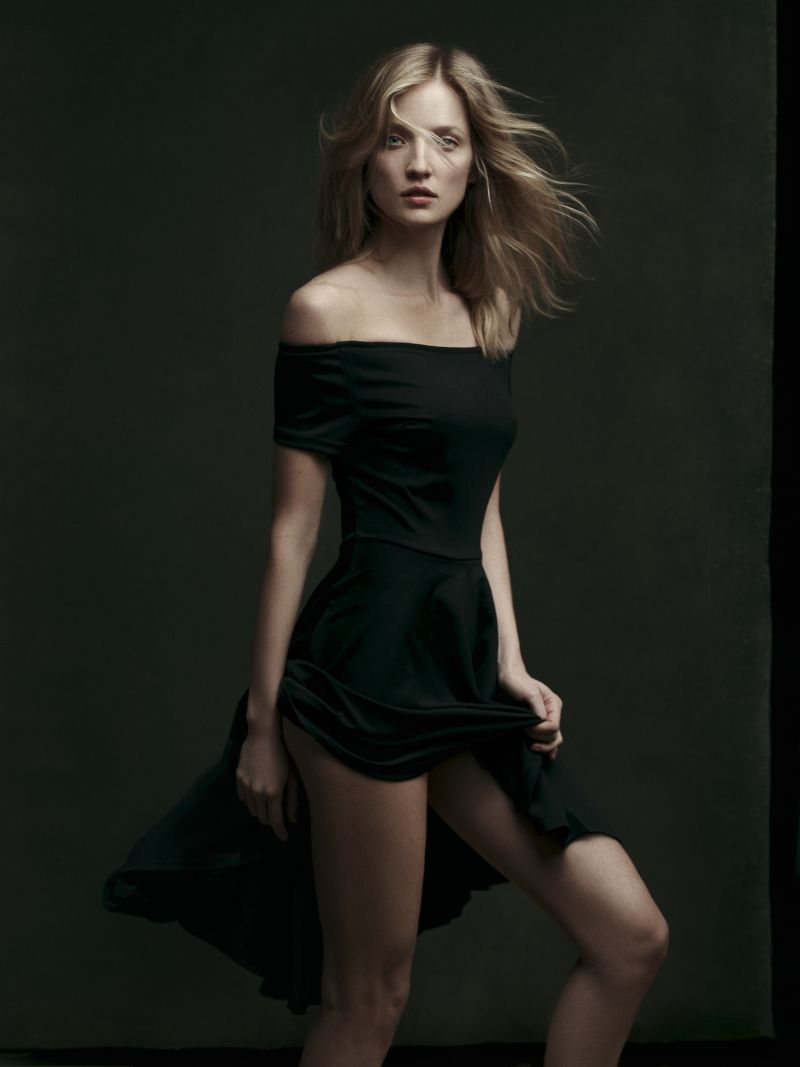
It’s become harder, these days, to distinguish between what’s good and what’s popular. While the two are often associated they must not be equated, and that distinction is something all photographers would do well to address. There can be this sense that when something proliferates like wildfire that it’s a barometer of quality, that the market dictates how good something is, but frankly, the market has no idea and ‘good’ as a descriptor can be subjective. After all, Justin Beiber has outsold Sam Cooke…
But for artists to stand the test of time, the quality has got to be there, especially in a ‘pillar’ of a genre like portraiture, and when someone creates things of worth that strike a popular chord as well, we stop and take note. Looking at Chris Knight’s body of work and observing his actions (he teaches at the New York Film Academy and the Pratt Institute), it’s quite clear that Chris falls into this category.
With a focus on ‘dramatic portraiture’, Chris’ work feels fresh but also ancient, absolutely paying homage to, and drawing inspiration from, classical painting. You can look at his starkly lit portraits and immediately see inspiration from Leibovitz but feel a bit of Vermeer. With a book out (aptly called The Dramatic Portrait: The Art of Crafting Light and Shadow), a tutorial with RGG EDU on the way, and some material for SLR Lounge coming, we wanted to glimpse a bit a personal side of Chris, and are glad to bring you an interview with him that will kick-off a new series of short, fun and concise interviews with those doing great things in our industry. So, without further a-do, Chris Knight:
How old were you when you had your first paying photography job, and how much time between that and the second?
My first paying job came in around 22 or 23. I’d say the second one came within the same year. Somewhere around $150 I think.
What’s your spirit animal?
The Maned Wolf
Do you think there’s a maximum or minimum age where you can begin being a photographer?
Absolutely not. Anyone can start at anytime. The important part is that we never reach an age when we stop learning.
What’s your favorite quote?
“Laughter and tears are both responses to frustration and exhaustion. I myself prefer to laugh, since there is less cleaning up to do afterwards.” -Kurt Vonnegut.
What’s been your best photography purchase under $100 and what’s been your favorite photography purchase, period?
Under $100 = Griffin PowerMate. It’s just a big knob, and who doesn’t like a big knob?
Best ever = Profoto Spot Small. It projects fun patterns on things. It took me years to convince myself to get one, but I actually use it all the time.
What’s in your gear bag?
Pentax 645z
120mm Macro
90mm
55mm
28-45mm
Pentax K-1
28-105mm
Profoto B1s (portable kit)
Profoto Air Remote
Profoto OCF Grid Kit
What’s the most pervasive myth in photography?
Technique matters more than personal style.
What do you think the next big trend in photography will be?
It seems like the push going forward is continuing to be a motion component or VR. Creatives are constantly looking for new ways to monetize as more people enter their industry and the bar continues to rise. I think it’s going to be interesting to watch more people carve out their niches in the future.
What’s your best quick photography or post processing tip?
When developing, use your clipping guides. Only include pure black or white if you need it. Print more, and you’ll see yourself get exponentially better at post-processing.
Do you think DSLRs are on the way out?
Not yet. It’s hard to say where the market will inevitably go. The big companies are still holding onto a pretty substantial part of the market, but things are always changing. We should always be willing to adapt based on the best options out there. But for now, I love my big camera.
Who took the best photo of you (selfies allowed)?
Lindsay Adler ☺ Otherwise, I typically hate having my picture taken.
Was there a time when you almost gave up photography and why/how did you get through it?
Most people go through a tough stage where they hate all their work or they want to quit. People will tell you that it happens all the time, but it’s still not something we necessarily take to heart because it’s still hard to deal with in the moment. My best advice is to just work through it with yourself. Shoot lots and create any kind of work that you want. Shoot more than what you’re paid or asked to. Be inspired by everything you can – photography, painting, movies, music, etc. You’ll come out stronger on the other side.
What would someone who doesn’t like your work say about it?
Meh.
Do you have a photography good-luck charm (could be a gear piece/person/whatever)?
Not really.
What’s the best move you’ve made in your career?
The best move I made was coming to New York. It’s a love it or hate it place. I definitely fall into the former category.
If you could go back to your first year in photography what would you do differently?
I would avoid the trendy hat phase.
Have you identified your ideal client, and if so, how do you market to them?
My ideal clients are open-minded during the creative process. It’s important to have a vision for yourself as well as the project. It’s great when the client just says, “we trust you.”
What’s your single favorite lens?
Who’s your favorite photographer?
It bounces around at any given time, but on the short list would be Irving Penn, Herb Ritts, Eugenio Recuenco, Erwin Olaf and Dan Winters.
What’s your craziest photography story?
Early on in my assisting career, I was working on a shoot and we ended up on the roof of a famous hotel in Miami Beach called the Eden Roc. I had to climb onto the outcropping where the stairs were and hold a reflector on a windy day – close to the edge with no rails and a sheer drop.
If you had to give one piece of advice to aspiring and established photographers today, what would it be?
Talent can get you in the door, but it alone rarely keeps you inside. There are a lot of things that will keep people coming back to you that don’t have to do with your talent. Show up early, develop your personal relationships, be nice and serve a good lunch.
What’s your favorite joke?
Probably this one.
You can find more from Chris on his site, and Instagram, and check out his book for a further look into his approach.
[REWIND: AN INTRODUCTION TO PHOTOGRAPHING MEN’S PORTRAITURE]

















Get Connected!